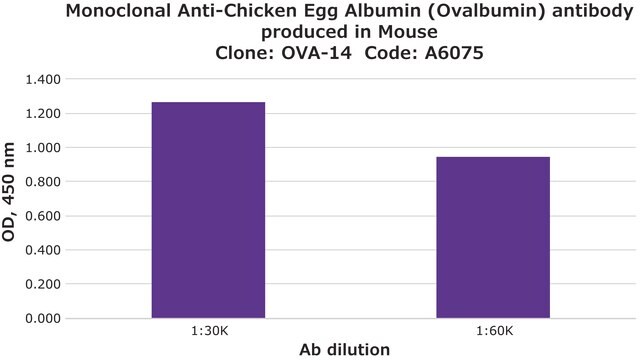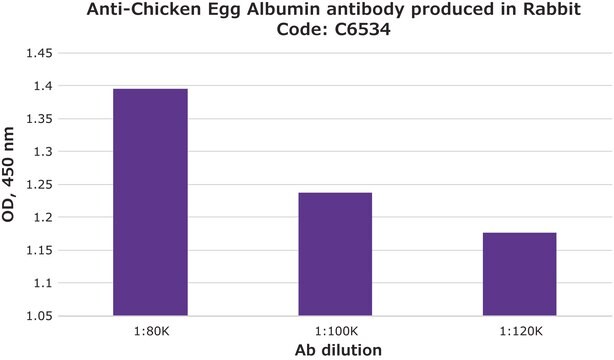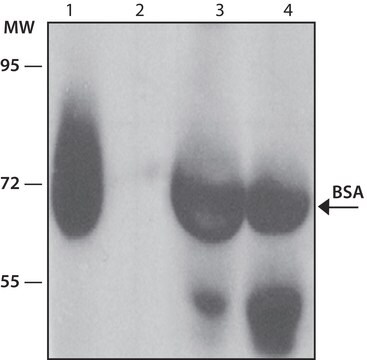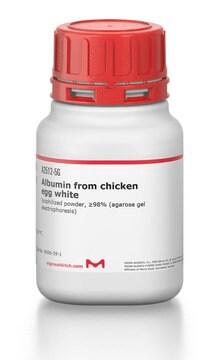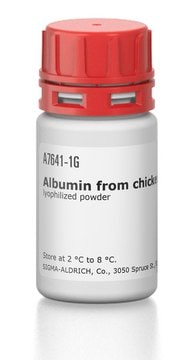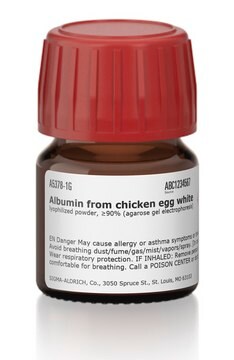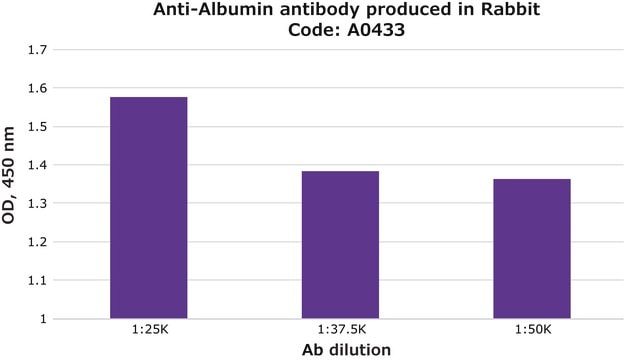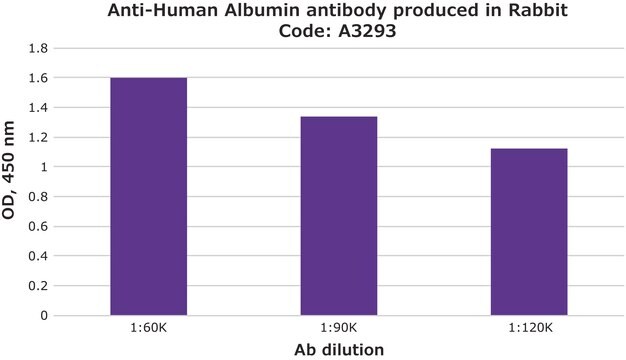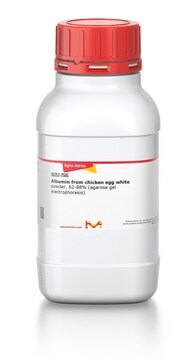SAB4200702
Anti-Chicken Egg Albumin (Ovalbumin) antibody, Mouse monoclonal
clone OVA-14, purified from hybridoma cell culture
Synonyme(s) :
Albumin, Plakalbumin, chicken egg
About This Item
Produits recommandés
Source biologique
mouse
Niveau de qualité
Forme d'anticorps
purified immunoglobulin
Type de produit anticorps
primary antibodies
Clone
OVA-14, monoclonal
Forme
buffered aqueous solution
Poids mol.
antigen 45 kDa
Espèces réactives
chicken, turkey
Concentration
~1 mg/mL
Technique(s)
competitive inhibition ELISA: suitable
dot blot: suitable
immunoblotting: suitable
indirect ELISA: 0.1-0.2 μg/mL using 10 μg/mL Albumin from chicken egg white (A5503) for coating.
Isotype
IgG1
Conditions d'expédition
dry ice
Température de stockage
−20°C
Modification post-traductionnelle de la cible
unmodified
Informations sur le gène
chicken ... Oval(396058)
Description générale
Ovalbumin (323-339) is the most abundant egg white protein surrounded by B-cell epitopes, which are bound by specific IgE antibodies. In addition, it also contains CD4+ T cell epitopes. Ovalbumin is a monomeric protein with a molecular mass of 45000Da.
Immunogène
Actions biochimiques/physiologiques
Forme physique
Stockage et stabilité
Autres remarques
Clause de non-responsabilité
Not finding the right product?
Try our Outil de sélection de produits.
Code de la classe de stockage
10 - Combustible liquids
Point d'éclair (°F)
Not applicable
Point d'éclair (°C)
Not applicable
Certificats d'analyse (COA)
Recherchez un Certificats d'analyse (COA) en saisissant le numéro de lot du produit. Les numéros de lot figurent sur l'étiquette du produit après les mots "Lot" ou "Batch".
Déjà en possession de ce produit ?
Retrouvez la documentation relative aux produits que vous avez récemment achetés dans la Bibliothèque de documents.
Les clients ont également consulté
Notre équipe de scientifiques dispose d'une expérience dans tous les secteurs de la recherche, notamment en sciences de la vie, science des matériaux, synthèse chimique, chromatographie, analyse et dans de nombreux autres domaines..
Contacter notre Service technique